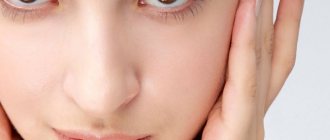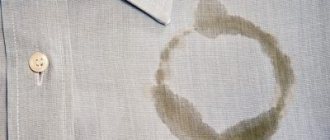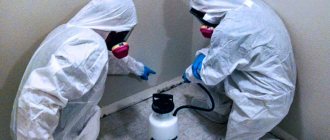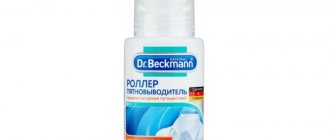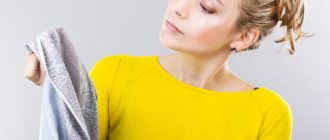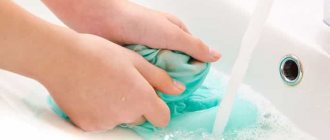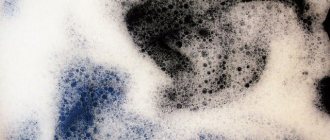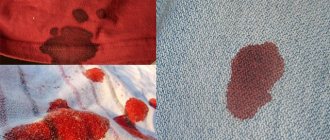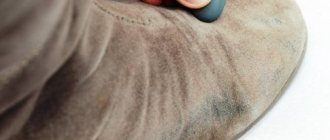Benefits of whitening with hydrogen peroxide
Benefits of bleaching white fabrics with hydrogen peroxide:
- low cost;
- removal of old plaque and yellowness;
- ease of use;
- preservation of the structure of the material;
- application for delicate fabrics;
- returning washed laundry to its original appearance;
- removing stains from deodorant, sweat and oil;
- availability of the drug.
The only downside to bleaching with hydrogen peroxide is the smell. Replace 1 tbsp. l. 3% peroxide can be 1 tablet of hydroperite. The effects of the drugs are the same.
Attention! The whitening effect is achieved by directly applying the product to the stain. The matter is saturated with oxygen, which breaks down the dirt.
Peroxide is a readily available antiseptic. The drug is sold in any pharmacy in the country. For bleaching, use a 3% peroxide solution. Usual composition concentration: 2 tbsp. l. drug per 10 liters of hot water.
White clothes look noble. But maintaining her ideal appearance for as long as possible is quite difficult. Light-colored linen quickly washes out, acquires a yellow tint and loses its shine. The use of hydrogen peroxide to remove stains from fabrics is associated with some features:
- When restoring the material, do not mix dark and light underwear to avoid shedding.
- Old yellow stains from wool and silk are removed in several stages. Clothing is placed in a mixture of peroxide diluted with water. After 30 minutes, the product is drained, the laundry is washed and dried. If dirt remains, the procedure is carried out the required number of times until the color is restored.
- Removing yellow stains from cotton and linen is carried out by directly applying a peroxide solution to the material. If the yellowness remains, the procedure is repeated until the contamination disappears.
- Bleaching is carried out only once every 3-4 washes, otherwise the strength properties of the material will be lost.
- After bleaching, clothes are rinsed in 2 stages: first at a temperature of 20-40 ° C, and then in cold water.
Each type of matter has its own recipe for restoring whiteness. Therefore, when bleaching, things are separated not only by color, but also by type of fabric: synthetics, silk and wool, or cotton and linen.
Maria Ivanova, 43 years old, Bryansk.
This is a super environmentally friendly and completely safe product. We have been using it for a very long time, and have completely abandoned the unknown origin of powders and whitening gels. For about 2 years now we have been washing only with laundry soap and bleaching with peroxide. Nothing complicated and just a wonderful result when washing white fabrics. Things always seem to come straight from the store. And they smell fresh after washing, not synthetic fragrances. This is safe whitening for children! My recipe for snow-white things: for 3 liters of water I take 5 tbsp. l. 3% hydrogen peroxide solution and 2 tbsp. l. the most common baking soda. I soak all my family’s white clothes in this mixture for 3 hours. Then I take it out and put it in the machine. I wash on the normal cycle and turn on the extra rinse function. And the linen is always snow-white! I wish the same for you!
Valeria Viktorovna, 62 years old, Volgograd.
We are very pleased with this excellent product. And things retain their snow-white appearance for a long time. The fabric looks like new after washing for several years! Before, I used different powders and strange bleaches. Because they were only called that, but in fact they did not cope with stains or restore the white color of the fabric at all. Only with the use of laundry soap in a solution with peroxide, my clothes are always snow-white. How do I make the mixture? I take about 1 tbsp. l. grated laundry soap and 1 tbsp. l. hydrogen peroxide. I dilute all this in 5 liters of warm water. I load things into this mixture and wait 2-3 hours. I rinse and dry as usual. Things are always snow-white! I recommend to everyone!
Vannikova Elena, 31 years old, Vologda.
The fact is that borax and hydrogen peroxide form crystals when they interact, which can be completely safely used for washing children's white linen. This powder is called hydroperite. You can buy it at any pharmacy for literally pennies. I crush these tablets into powder, then dilute them in water and soak my children's clothes. Literally everything is washed. I couldn’t remove stains from eating on my eldest son’s undershirts at all. I didn’t know about such a simple and very effective method. But I was lucky with my second child. Now washing is not a problem. Things are always neat and without stains. I recommend to everyone!
Did you find this article useful?
A three percent solution of hydrogen peroxide is a natural bleach that does not damage fabrics and is environmentally friendly. It is recommended to use hydrogen peroxide in the following cases:
- to avoid gray residue when washing bed linen in an automatic machine;
- to restore original whiteness;
- for whitening light-colored items from coffee, tea, fruit, and wine stains;
- to get rid of old yellow stains on white clothes.
A modern woman, busy with work and household chores, does not always have time to tinker with laundry: soak, rinse, apply bleaching products, etc. It is much easier to throw things into an automatic machine so that it can wash and spin the laundry itself. However, at least once a month it is worth tidying up white items that have turned gray from repeated washing:
- availability (can be purchased at any pharmacy);
- low cost;
- ease of use;
- preservation of the structure of the material, which allows it to be used for delicate fabrics;
- removal of old plaque and yellowness;
- Removes stains from deodorant, sweat and oil.
The combination of soda and hydrogen peroxide is suitable for almost all types of natural and artificial fabrics, including linen, cotton, wool, silk, knitwear and synthetics.
Bleaching things
In a woman's wardrobe, almost everyone has such a thing as lace underwear. To prevent it from losing its attractiveness, as it is subject to rapid wear and tear, you have to use various detergents. I would like to see the linen always snow-white, and not washed.
Important! Lace does not like hot water, so it is washed at a temperature no higher than 40 degrees.
Several ways to whiten things while washing with hydrogen peroxide:
- Items made of cotton, linen or synthetics can be bleached in an automatic machine. Take 25 spoons of washing powder and 15 ml of peroxide. The washing mode is set for five minutes. Water temperature is approximately 80 degrees.
- Silk linen and woolen items are washed using a solution: 12 liters of hot water, 250 grams of salt, 30 grams of detergent and 3 tablespoons of hydrogen peroxide. After this procedure, all contaminants are washed off.
- Tulle that has lost its former whiteness is washed in 10 liters of water with one tablespoon of ammonia and two tablespoons of peroxide.
Underwear is a delicate material, so even a delicate wash cycle can damage it. Therefore, it is better to wash it by hand. A reliable way to whiten such items of clothing is as follows:
- Pour slightly warm water into a basin;
- add 3 large spoons of hydrogen peroxide to it and stir;
- It should be washed in a simple way.
The linen will be like new.
Peroxide will gently whiten even delicate fabrics
Hide your sweating
The smell from sweat can be eliminated with the help of deodorant, but treacherous clothes will reveal your secret to everyone: you can’t hide the characteristic yellow stains under your arms. How frustrating it can be to put away a beautiful dress in your closet after your first outing! It is not always possible to wash an item to its original cleanliness, and not every fabric will remain fresh and new after wet treatment.
In order not to spread “fragrance” around them, in the heat, even people with slight sweating use odor neutralizers. Not everyone has high-quality perfume, and deodorant stains often remain on clothes under the arms. In combination with yellow stains from sweat, a very colorful and noticeable picture is obtained.
We invite you to familiarize yourself with 3 methods of combating spider mites on indoor plants - Disinfection Service Moscow
Open the closet, take out all the dresses, blouses and shirts with traces of sweat under the arms. Now separate the whites from the colored ones and open your dry cleaning service at home. Take cheap aspirin, which our great-grandmothers used. The new instant formulations may be effective for treating colds, but they may not remove stains.
Perform further operations in this order.
- Crush 2-3 tablets thoroughly so that not even small pieces remain.
- Pour a full glass of warm water and dissolve the powder in it.
- Lay the stained item out on a flat surface so you can easily work on each sweat or deodorant stain.
- Wet the contaminated areas under the arms well and keep wet for 1 to 2 hours.
- Rinse items to completely remove aspirin.
If sweat and deodorant stains on clothes are too old and cannot be removed, prepare a thicker composition: add just a little water to the powder so that the product resembles toothpaste. Apply to remaining dirt and rinse after 10 minutes. To remove particularly stubborn stains under the arms, you can leave them under the paste for an hour. After all procedures, wash things in your usual way.
Cleaning furniture and carpets
You should not experiment with methods for removing traces of mulberries from furniture and carpets, since replacing them is quite difficult. It is best to use proven factory-made home remedies such as Vanish for carpets or Cinderella. Their composition gently affects the upholstery of furniture and carpets, lifts, and carefully cleans the pile.
If the stain is fresh, it can be easily removed with a special carpet cleaner.
If the droplets of berries are fresh and no special products can be found, you can use the option of emergency carpet cleaning. On the dirt that is sprayed with a spray bottle, use ordinary baking soda. spray vinegar. After an hour, when the fabric is dry, remove the composition with a vacuum cleaner.
Berry stains can be easily removed in the first 2 hours after they form. A bad attitude towards this type of pollution leads to irreversible damage to clothing and long, grueling attempts to restore the decent appearance of your favorite item.
The entire menu is written on the tablecloth
A white tablecloth is a wonderful decoration for a banquet table. One problem: after the feast, the entire menu can be set by the color of the spots. There was a vinaigrette in the center of the table, as reminiscent of burgundy splashes and blots. The carafe of apple juice left brown streaks on the right edge. Where the groups of bottles were installed, there remained an abstract painting of strokes of various yellow, red, and burgundy shades.
Of course, this doesn’t happen after every holiday, but when children are sitting at the table, stains cannot be avoided. Try a simple way to remove stains from tablecloths and napkins, and the day after the celebration will not bring any disappointments. Make a mixture of 2-3 aspirin tablets per glass of water, as for removing sweat stains, and pour the solution into a basin with soaked items. After an hour, rinse and machine wash with powder. There will be no trace of stains left.
You can clean baby clothes in the same way. Babies constantly stain their shirts and undershirts with juices and applesauce. It is impossible to wash off these stains, but if you do not delay and immediately soak the clothes in water, and then add an aspirin solution, things can be saved. Rinse your baby's underwear thoroughly and then wash it, and there won't even be any memories left of stains on your clothes.
How to bleach clothes with hydrogen peroxide
With repeated washings, the white item turns gray and dull. To restore the color saturation of the laundry, prepare a composition at the rate of ¼ cup of hydrogen peroxide per 5 liters of water at a temperature of up to 40 ° C. The laundry is left in the resulting mixture for 3 hours, then rinsed with the addition of vinegar or balm for delicate natural fabrics.
It is recommended to use a 3% peroxide solution when bleaching fabrics in the following ways:
- to get rid of old yellow stains, white clothes are soaked in the mixture for 1-2 hours;
- to avoid gray deposits on bedding, add 1/2 cup of hydrogen peroxide to the automatic machine when washing clothes;
- to restore the original color, white items are soaked in the solution for 1-3 hours;
- To whiten clothes from tea, coffee, wine, fruit, juice and blood, the composition is applied directly to the stain.
Stains on white clothes made from fabrics containing wool or silk are removed by hand washing. A solution to remove stains with hydrogen peroxide prepared from the following ingredients:
- 200 g table salt;
- 25 g of detergent for delicate fabrics;
- 10 liters of water at a temperature of up to 30 °C;
- 700 ml 3% peroxide.
Delicate items made of wool and silk are washed by hand at a temperature of 25-35 oC.
White clothes are placed in the prepared mixture for 3-5 hours. Then carefully remove the item using pressing movements. The product is not pulled out, but everything is taken out at once, pressing with both hands. Draw warm water up to 35 ° C and rinse the laundry well with conditioner for delicate fabrics. The washed clothes are carefully laid out on a horizontal surface covered with a terry towel.
To restore the whiteness of down products, add 2 tbsp to 10 liters of water at a temperature of 30-35 °C. l. peroxide and place a shawl or scarf in the resulting mixture for 20 minutes. After washing, the product is rinsed with the addition of vinegar and hair conditioner.
White underwear made of thin synthetic material wears out and loses color over time. Bleaching bras and panties with hydrogen peroxide. To do this, soak underwear in the following composition:
- 10 liters of water at a temperature of 20-30 ° C are taken into the basin;
- diluted with 3 tbsp. 3% hydrogen peroxide stirring;
- soak white underwear in the prepared product for 1 hour;
- The laundry is placed in an automatic machine, washed in the usual way, rinsed with the additional rinse function and dried.
Advice! To bleach polyester lace underwear, use only granular powder or a product for delicate white fabrics.
Soaking white synthetic items in a prepared peroxide solution for 30 minutes before the main wash will remove the smell of sweat from your laundry.
White linen and cotton items are bleached with a 3% peroxide solution, placing it directly into the powder compartment of the automatic machine during washing. 15 ml of peroxide is added to the cell at a water temperature of 65 °C.
To bleach a T-shirt and knitwear, hydrogen peroxide is poured into a plastic basin or bucket with 2 liters of water at a temperature of 40-65 ° C and 1 tsp is added. peroxide. White T-shirts are placed in the resulting composition for 20 minutes. After this, the clothes are rinsed and dried.
If white knitted clothing has yellow spots, add 1 tsp to the resulting product. soda This will give the product a lost whiteness.
When removing hydrogen peroxide stains on white things without protective equipment, you can get burned.
Burn on hand from hydrogen peroxide
There are precautions that must be followed:
- A paste of baking soda and hydrogen peroxide is applied to a white cloth for 10-15 minutes.
- Delicate items are soaked in warm water at a temperature of no more than 40 °C.
- Industrial bleaches are not added to hydrogen peroxide solutions. Combined use results in an undesirable chemical reaction, which may cause things to deteriorate or cause a fire.
- Rust stains on white clothes cannot be removed with peroxide.
- It is recommended to wear rubber gloves when mixing compounds to avoid getting burned.
- If the solution comes into contact with the eyes or mouth, a burn to the mucous membrane may occur. The affected areas are thoroughly washed with plenty of running water. If blisters begin to appear, immediately consult a doctor for qualified help.
- At home, it is not recommended to use a hydrogen peroxide solution of more than 3%.
- It is necessary to work with peroxide only in ventilated areas to avoid poisoning.
- In order not to spoil the clothes, first test the product on a piece of cloth or in an inconspicuous area.
Attention! Items should be completely immersed in the hydrogen peroxide solution. To avoid product color differences after surgery.
Folk remedies are used not only to treat various ailments, but also to remove stains of various origins from clothing.
We invite you to familiarize yourself with Caring for an acrylic bathtub: useful tips and a review of cleaning products
Laundry soap
An active fight against contaminated areas on white or colored clothes should be started, armed with a small piece of laundry soap, no matter how strange it may sound.
Before abandoning this method, first try it. After all, soap is much cheaper than expensive stain removers and other specialized cleaning products.
In addition, soap will not ruin your clothes, no matter what material they are made of, unlike chemicals. To remove stubborn stains, you need to soak it in cold water and then rub it on both sides with soap.
Wait a while and then wash the dirty item at home in a regular washing machine.
An excellent remedy is a mixture of medicines that can be bought for pennies at a regular pharmacy - Aspirin and hydrogen peroxide. How to prepare the required mixture?
To do this, you will need to grind Aspirin and mix it with peroxide, and then treat the contaminated area with the mixture. Using this solution you can easily remove stains from rust, berries, etc.
Hydrogen peroxide mixed with baking soda works great when washing children's clothes. To do this you will need 2 packs of peroxide and a tablespoon of soda. The prepared solution is applied to the stain for several hours and then washed by hand or in a machine, everything will depend on the type of fabric.
Salt and soda
Another excellent homemade stain remover is ingredients such as soap, salt and soda, from which a special solution is prepared. To prepare it, we need 4 tablespoons of soda, the same amount of salt, and 2 tablespoons of soap.
This mixture must also be applied to the contaminated area and allowed to soak for several hours, and then washed thoroughly. This composition will perfectly cope with stains on a white shirt and other clothes, especially if the item is made of cotton fabric.
Table vinegar
Ordinary table vinegar not only perfectly removes stains, but also returns clothes to their former brightness of colors, and also helps get rid of unpleasant odors. To do this, 70% vinegar will need to be mixed with water and poured over the stain.
But you should be extremely careful, because if you leave this composition on your clothes, the item will be damaged. A few minutes is enough. This product is suitable not only for colored items, but also for white clothes.
Blood on fabric
A hydrogen peroxide solution removes stains on cuffs and collars and restores the appearance of gray, worn clothes. The following drugs help enhance the bleaching effect of white fabrics:
- ammonia;
- soda ash;
- lemon juice or acid;
- laundry soap.
This composition is used only for washing white items. It is impossible to remove stains on colored fabrics with this product, since the combination of peroxide with other substances can lead to discoloration of the material.
Ammonia will help get rid of gray plaque and yellowness on white fabrics and enhance the whitening effect. For this we recommend:
- Dilute 1 tbsp in 5 liters of water at a temperature of up to 40 °C. l. peroxide and 1 tbsp. l. ammonia.
- Dip white clothes into the resulting solution and leave to soak for 30-50 minutes.
- After the time has passed, snow-white items are rinsed twice and washed daily.
Whitening tulle with hydrogen peroxide is carried out with a composition of:
- 10 liters of water, temperature 40-65 oC;
- 2 tbsp. l. 3% peroxide;
- 1 tbsp. l. ammonia.
The tulle is placed in the resulting mixture, soaked for 5-10 minutes, and rinsed thoroughly with warm and cold water.
A solution of hydrogen peroxide and ammonia with water helps restore lost whiteness to things
To bleach a blouse or shirt, dilute 1 tbsp in 10 liters of water at a temperature of 40-70 °C. l. ammonia and 2 tbsp. l. 3% hydrogen peroxide solution. The laundry is dipped into the resulting composition for 20-30 minutes and rinsed thoroughly.
To ensure that cuffs and collars are washed perfectly, they are first rubbed with laundry soap. This enhances the whitening effect.
A mixture of hydrogen peroxide and soda has an effect comparable in quality to professional bleach. To restore the whiteness of collars and cuffs, prepare a paste of 10 ml of peroxide and 1 tsp. soda The resulting composition is applied to the contaminated areas with a brush and left for 5-15 minutes. Then wash in an automatic machine with an additional rinse function.
A paste made from hydrogen peroxide and baking soda whitens shirt cuffs and collars.
When bleaching children's whites and kitchen towels with a mixture of hydrogen peroxide and soda, excellent results are obtained. This mixture has proven itself well among housewives. Add 1 tsp to 2 liters of water at a temperature of 30 °C. peroxide and 1 tbsp. l. soda ash. White items are placed in the mixture for 10 minutes and washed as usual.
Cotton and linen white kitchen towels can be bleached using soda ash and peroxide, which are poured into the laundry detergent compartment. At a temperature of 60-70 oC, laundry is washed as usual. It is not recommended to use additional stain removers with this method.
Attention! Use baking soda and peroxide bleach only on cotton and linen fabrics. Before using the paste on things, the product is tested in an inconspicuous place of the product so as not to burn the material.
School white shirts cause a lot of trouble for housewives. Stubborn stains from sweat and deodorants, greasy food marks, marks from a ballpoint pen - all this must be removed from the child’s clothes. The following solution will help to bleach a blouse with hydrogen peroxide from sweat and yellow stains:
- 4 liters of water at a temperature of 40-70 ° C;
- 2 tbsp. l. soda ash;
- 2 tsp. peroxide.
We suggest you familiarize yourself with how long eggs can be stored in the refrigerator (raw): Shelf life of chicken eggs
A shirt or blouse is dipped into the resulting composition for 15 minutes. After the time has passed, the items are thoroughly rinsed and dried.
Stages of whitening a blouse using a solution of water, hydrogen peroxide and soda
A solution of lemon juice or acid and hydrogen peroxide can even cope with stains from fuel oil and diesel fuel on white things. To prepare the composition you will need:
- 2 liters of warm water;
- 1 tsp. peroxide;
- 1 tsp. citric acid.
White clothes with stains are soaked in the resulting mixture for 10-15 minutes, rinsed well and washed.
Synthetic fibers react well to citric acid, which helps to delicately deal with stains on white items. For this:
- Water at a temperature of up to 40 °C is filled into the basin.
- Add 1 tsp. hydrogen peroxide.
- Squeeze juice from ½ part lemon.
- Mix the composition thoroughly.
- Place clothes made of synthetic fabric for 20-30 minutes.
- Rinse things thoroughly, first at temperatures up to 40 ° C, and then in cold water.
The composition of citric acid and hydrogen peroxide gently whitens synthetic fabrics
The resulting solution eliminates yellowness on white blouses. To do this, apply the mixture to the areas of contamination with a sponge and leave for 30 minutes. If necessary, wash the entire item with this mixture.
Light jeans always have a problem bleaching. A composition of citric acid and hydrogen peroxide will cope with stains on things. To do this, mix 1 liter of water with 1 tsp. citric acid and 1 tbsp. l. hydrogen peroxide. White jeans are soaked for 20-30 minutes. Wash with the extra rinse function.
If desired, this product is applied from a spray bottle to the legs of colored jeans to lighten some areas.
To achieve a snow-white effect on synthetic fabrics, use the following composition:
- 5 liters of warm water;
- 1 tbsp. l. washing powder for delicate fabrics;
- 4 tbsp. l. table salt;
- 1 tbsp. l. hydrogen peroxide;
- 1 tbsp. l. ammonia.
Mix the ingredients well. White items made from synthetic fibers are immersed in the resulting solution for 2 hours. Rinse thoroughly 2 or more times.
To whiten things, modern housewives use proven industrial bleaches. Their use gives a good effect, but they cannot be used for all fabrics. Chemical bleaches can cause allergic reactions, so more and more women prefer folk remedies - hydrogen peroxide and soda. If the use of these drugs does not produce the desired effect, you can enhance their effect with the help of additional substances:
- salt is suitable for wool and silk and enhances the effect of the solution,
- ammonia eliminates unpleasant odors and gets rid of yellowness,
- citric acid and aspirin are universal and are added to whiten any things.
How to wash white clothes with hydrogen peroxide
Old blood stains are very difficult to remove. Don't wait until the item becomes completely unusable; get down to business as quickly as possible. Under no circumstances should you put soiled clothing in hot water or expose it to other heat: traces of cooked proteins will be impossible to remove by any means.
There are many answers to the question of how to remove blood stains, and housewives often make an unforgivable mistake. We tried to clean the clothes with soda - traces remained, took citric acid and tried again - nothing changed. Different substances cause their own reactions in the pollutant, and when you change the product, the new drug may turn out to be a fixative that will fix stains for centuries.
- special stain removers;
- aspirin;
- hydrogen peroxide;
- lemon;
- soda;
- toothpaste.
Well, if clothes made from durable fabrics are dirty, you can use the same methods that you use to remove other stains. If blood gets on silk or other delicate material, you need to act very carefully. Take half a glass of warm water and dissolve an aspirin tablet in it. Soak a soft brush in the mixture and gently scrub the stains until they disappear.
Washing bed linen
We are sure you will agree that snow-white bed linen looks elegant and fresh. Unfortunately, hard water and frequent washing with laundry detergent will give the perfect white color a yellow tint. To solve the problem, you can use ready-made bleaches, which are sold in household chemical stores, or deal with yellowness and small stains yourself.
If the linen is cotton or linen, do this:
- pour a sufficient amount of liquid into a fireproof container and lower the laundry into it;
- boil the bedding for about an hour;
- after this, gradually add 30-40 grams of peroxide and ammonia to the water;
- continue to boil the laundry for another hour.
We advise you to find out what products can be used to remove fresh and old raspberry stains.
Read: how to properly wash laminate flooring to make it shine.
How to remove stains using hydrogen peroxide from delicate fabrics, such as silk? Here we need a completely different approach and, of course, no boiling:
- First, wash silk bed linen a little by hand;
- then add two tablespoons of ammonia and peroxide to the water;
- soak the laundry for several hours depending on the degree of contamination;
- rinse and dry in the shade.
Tip: To enhance the whitening effect, in some cases you can add a little salt to the soaking liquid.
Aspirin for beauty
The appearance of age spots on the skin will ruin the mood of any woman. If acetylsalicylic acid helps tidy up your clothes, why not use it to cleanse your face? This drug acts as a scrub, as a bleach, and as a tonic that helps activate metabolic processes in the epidermis. Please note that a one-time procedure will not give any effect; you need to do facial care regularly.
Try using the simplest recipes. There is no need to make compositions from many components, they can give an unpredictable reaction, and instead of eliminating age spots, you will get inflammation and burns. Compositions for masks cannot be stored; they are prepared before use. Do the treatments before bed to avoid exposing your skin to sunlight for several hours. The preparations need to be applied not only to spots, but also to the entire face.
- Grind 2 aspirin tablets, mix with 12 g of white clay, add water so that the mixture resembles sour cream in thickness. Keep on face for 10 minutes.
- Add 6 crushed acetylsalicylic acid tablets and 7 ml of lemon juice to 10 ml of dark honey. Stir and apply to skin for 15 minutes. Lightly massage your face and rinse off the mask. Dilute 7 g of soda in water to make a paste, and immediately after washing, apply to the skin for 15 minutes.
- Tonic for daily wiping. Crush 4 aspirin tablets, mix with 100 ml of water and 20 ml of apple cider vinegar.
- Lotion. Dissolve 10 crushed acetylsalicylic acid tablets in 100 ml of water. Wipe your face every other day, perform 3 procedures, then take a break for 3 weeks.
Cosmetics containing aspirin have contraindications. No matter how great the desire to get rid of age spots during pregnancy and after childbirth, think first of all about the baby and better use foundation. Do not use acetylsalicylic acid for allergies, asthma, or skin problems. In any case, before using the product, it is better to first consult a doctor than to eliminate health problems later.
How to choose the best one from the many stain removal recipes? Only experience and practice will help you with this. Just as two housewives will get completely different borscht from the same products, so when caring for clothes: products that are effective in the hands of one woman turn out to be completely useless in another.
Start experimenting with simple fabrics and available inexpensive substances: soda, vinegar, aspirin. Perhaps you choose one product for sweat stains and deodorant stains, and another for pigment stains from juice. Very soon you will have your favorite techniques and your own secrets for keeping your clothes clean.
How does peroxide help with laundry?
Hydrogen peroxide is a remedy that can be found in every family's medicine cabinet. The drug, when applied to sweat stains, effectively fights bacteria, which are the cause of the unpleasant odor.
In addition to the antibacterial effect, hydroperite is good at removing traces of sweat from things, and is also a good alternative to expensive bleaches and stain removers.
Perhydrol returns crystal whiteness to faded, washed fabrics.
